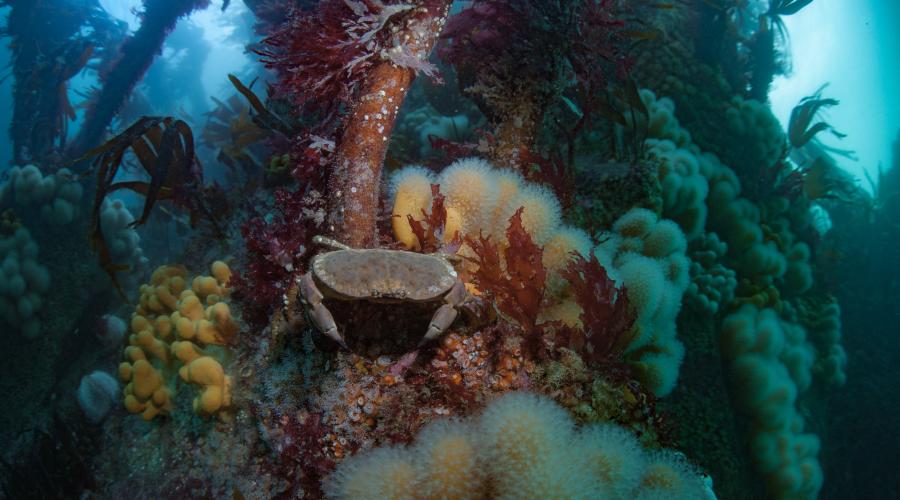
From sofa to seabed: virtual training to explore marine life
25 June 2020
Communities can now survey Scotland’s seabed and coastlines from the comfort of home with the launch of innovative virtual training.
From the critically endangered flapper skate to vast kelp forests, basking shark feeding grounds to delicate maerl and flame shell beds, Scotland’s seas and shores support an estimated 8,000 species of plants and animals.
In Scotland’s Year of Coasts and Waters, NatureScot wants to encourage more people to get involved in recording and monitoring their local marine life. The Community-led Marine Biodiversity Monitoring Handbook – Scotland’s first “how to” guide - has been developed including comprehensive information and resources for planning and carrying out surveying and monitoring.
While coronavirus restrictions mean that surveying in the field may be on hold for the foreseeable future, NatureScot is launching new online training to accompany the handbook that will help those interested get started right away.
The training allows people to learn about different habitats and species and improve their survey skills by taking a virtual dive, to experience and practice those skills on real survey footage of a variety of locations around Scotland.
It is aimed at a wide range of users, including coastal communities, local environment groups and those who use the sea for work or recreation.
NatureScot project officer Caitlin Orr said: “We developed the handbook in response to the clear message we hear from people all around Scotland that they want to get more involved with their local coasts and waters and the decisions that affect them.
“The ongoing coronavirus restrictions inevitably mean that people won’t be able to get out and about using the handbook as we had hoped, but we wanted to develop a way for people to get started and begin to boost their skills right away.
“We hope that together with the handbook, this online training will inspire and support more people to get involved in monitoring our seas and shorelines when it is safe to do so.”
Community-led monitoring can play a valuable role in boosting our knowledge of marine species and habitat distribution around Scotland. The ultimate aim is to increase participation in marine biodiversity survey and provide resources and support to allow this to be done efficiently, safely and enjoyably. NatureScot is also working to ensure the data collected by communities is of the highest quality so that it can make a valuable contribution to future research.
The Community-led Marine Biodiversity Monitoring Project is a partnership between NatureScot, Fauna & Flora International (FFI), communities, local groups and individuals, with funding support from the William Grant Foundation.
Kerri Whiteside, FFI’s marine community support officer, said: “Those who live along Scotland’s breath-taking coastline are incredibly motivated to explore, and look after, the marine life that exists in their nearby waters.
“FFI is delighted to be working with NatureScot to enable better access to biodiversity monitoring tools and practices - pooling knowledge and skills together through collaborative initiatives like this will ultimately ensure that we have healthier seas into the future.”
Nick Addington, Chief Executive of the William Grant Foundation, said: “The William Grant Foundation is delighted to support this partnership between NatureScot and Scotland’s coastal communities.
“No-one has more of a stake in the health of our marine environment than the people who live and work in and around our coasts. We hope this initiative will empower local volunteers and community groups to play a greater role in efforts to understand and protect marine habitats and species.”




